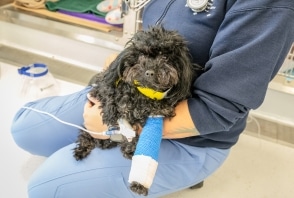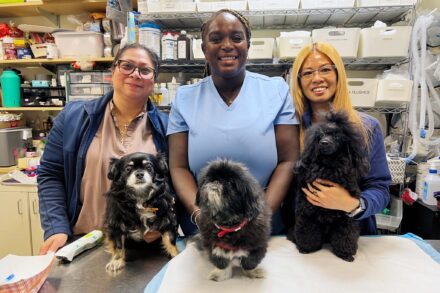Nasal Tumors in Dogs
Background
Tumors that occur inside the nose are uncommon canine tumors. These tumors in dogs are more frequently seen in older male and female dogs. Radiation therapy is the most common cancer treatment for nasal tumors.
Risk Factors
- Dogs with long noses, i.e. collies and other dolichocephalic breeds
- Medium to large breed dogs
- Living in an urban environment
- Exposure to secondhand smoke
- Exposure to coal or kerosene heaters
Signs
- Nasal discharge from one or both sides of the nose
- Excessive sneezing
- Nose bleeds
- New onset snoring
- Seizures
- Shying away from being petted on the head or near the nose
- Rubbing or pawing at the face
- A change in your pet’s face or nose shape (facial deformity)
- Lethargy, weight loss, and/or inappetence if the cancer is taking a toll on their body
Diagnosis
A biopsy is necessary to determine the exact type of tumor in the nose. This is commonly performed at the same time as a CT scan which determines the extent of the tumor. A biopsy can also be performed by a rhinoscopy (or fiber-optic endoscope placed into the nose). The most common nasal tumors in dogs are adenocarcinoma or carcinoma, fibrosarcoma, chondrosarcoma, lymphoma, and squamous cell carcinoma.
Nasal tumors can metastasize (spread) to the nearby lymph nodes and the lungs. A thorough evaluation before the biopsy is necessary and includes a physical examination, blood work, chest x-rays, lymph node assessment, abdominal ultrasound, and a CT scan.
Treatment
Radiation therapy is the treatment of choice for most nasal tumors, especially if the tumor has not spread. On occasion, chemotherapy may be recommended for tumors that have spread further or for nasal lymphoma.
Radiation can be performed in 3, 6, 10, or 18 treatments, depending on the amount of tumor present, any other medical conditions of the pet and the goals of therapy. Treatment is typically given 3-5 times per week though at times it can be done once a week for 6 weeks. Your pet will need to be anesthetized for each radiation treatment to ensure the utmost accuracy in treating the cancer site.
Radiation Side Effects
It is the goal of the radiation therapy team to minimize the side effects as much as possible. Unfortunately, there is always a risk of side effects with any medical treatment. Side effects occur only in the area that is receiving radiation.
- Acute Effects – these typically occur within the first few weeks of treatment up to a few weeks after radiation has been completed. Signs can include pink/red or moist skin or fur loss.
- Late Effects – these can occur months to years after radiation and can include no fur in the RT area, white fur regrowth, skin discoloration, dry/thin skin, scar tissue, lymphedema, or lysis of the bone or fractures. While many patients will experience changes to their fur, they rarely will experience other late effects.
Prognosis
Prognosis with radiation therapy will depend on the extent of cancer, the goals of radiation, and the presence of other diseases. For nasal tumors, many dogs will do well for a year or more!
Make an Appointment
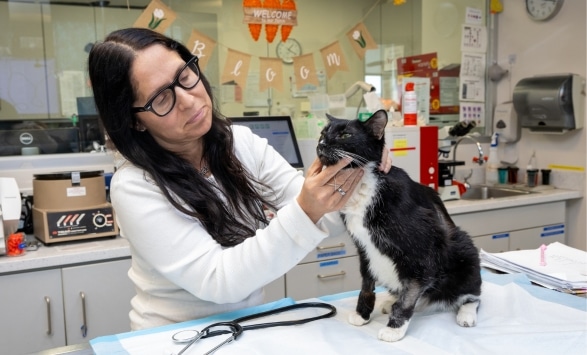
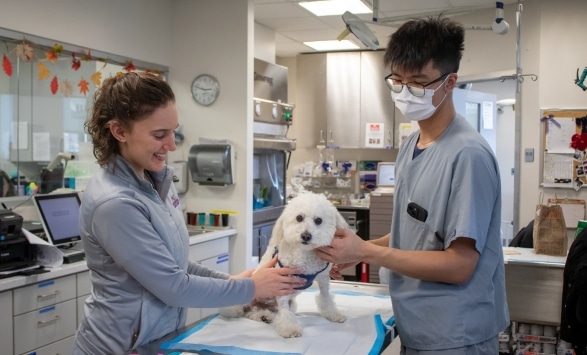
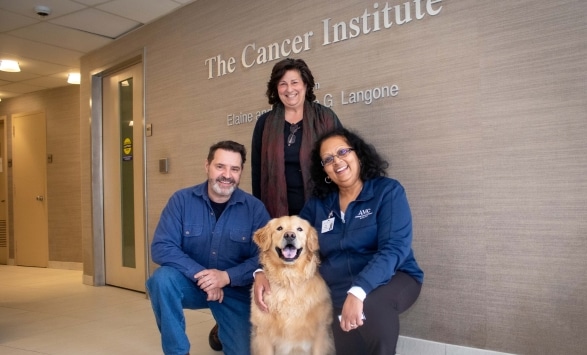
Oncology
AMC's Cancer Institute is a revolutionary medical center, created to provide integrative and comprehensive care for pets diagnosed with cancer.
Learn More


